El Hierro, do you dare to explore the tranquility of this unique island?
Discover on your own the island of El Hierro, the quiet island of the Canary Islands. The island has a unique volcanic landscape, with rugged coasts and dense forests. The Parque Rural de Frontera is a highlight for its biological and geological diversity.
It is characterized by its unspoiled nature and unique character, from spectacular cliffs and natural pools to dense forests and volcanic landscapes. Visitors can discover the rich herreña culture, enjoy local gastronomy such as herreño cheese and wine, and explore picturesque villages full of history.
For nature and diving lovers, El Hierro is a true paradise, with impressive seabed and hiking trails that run through its unique geography. This island, the smallest of the Canary Islands, is perfect for those looking to disconnect and live an authentic experience in a unique and preserved environment.
El Hierro is the least populated and least extensive of the main islands of the archipelago.
Population of the island in 2023: 11 646 inhabitants
Capital: Valverde
Ethnonym: Herreño /Herreña
1. History of El Hierro
The history of El Hierro is marked by its cultural heritage and the events that have shaped its society over the centuries. From pre-Hispanic times to its integration into the Kingdom of Spain, the island has undergone significant transformations that have left an indelible mark.
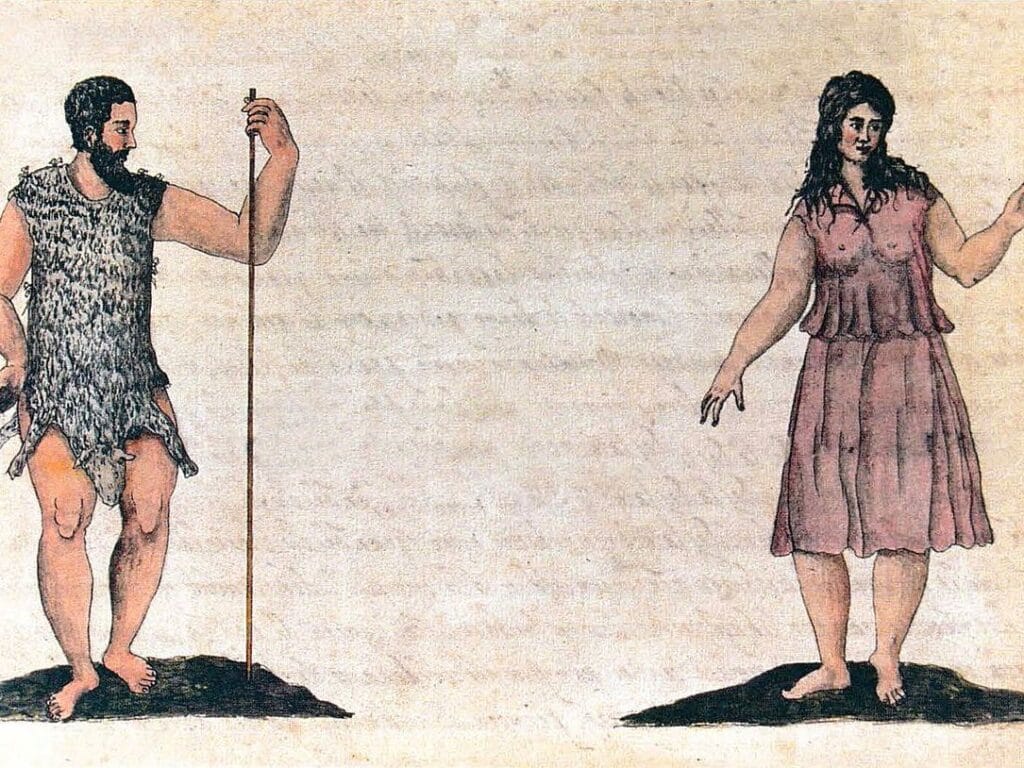
Pre-Hispanic origins and the Bimbache people
The first inhabitants of El Hierro were the Bimbache, an indigenous people who established communities on the island long before the arrival of Europeans. It is estimated that these inhabitants lived on the island for some 2,500 years, leaving behind important archaeological remains. Their remains are found in sites such as El Sabinar, where stone tools and other artifacts have been discovered that illustrate their way of life.
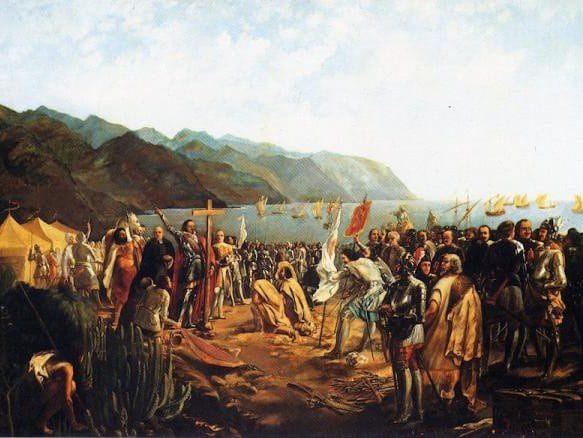
Castilian conquest and its impact
The arrival of the Castilian conquerors in the 15th century marked an important turning point in the history of the island. In 1405, Juan de Bethencourt began the process of colonization and betrayal of the native culture. The conquest was carried out with resistance from the Bimbache, but finally Spanish domination prevailed. This process had profound effects on the social, economic and cultural structure of El Hierro.
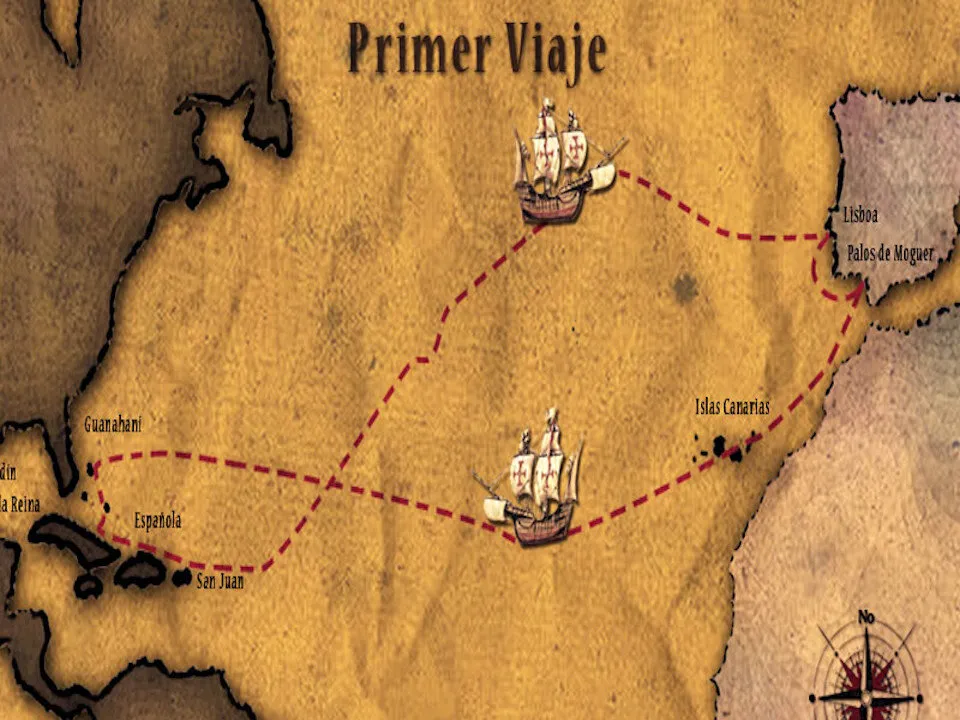
Christopher Columbus' visit in 1492
One of the most outstanding events in the history of El Hierro was the visit of Christopher Columbus in 1492. During his voyage to America, Columbus made a stop on the island to stock up on water and food. This fact not only highlights the importance of the island as a stopover point in maritime explorations, but also connects El Hierro with the great historical events that defined the beginning of the Age of Discovery.
2. Cultural Heritage
The island's cultural heritage reflects its historical roots and rich tradition. From emblematic monuments to popular festivities, it offers a complete vision of the island's identity.
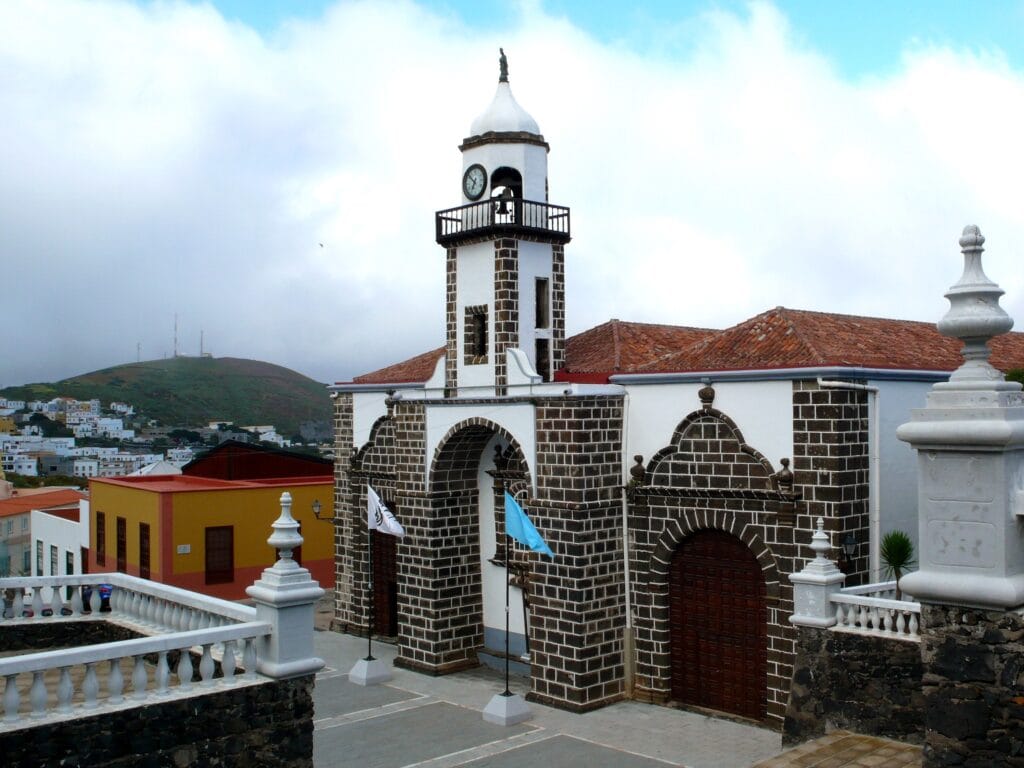
Church of La Concepción
History and architecture
The Church of La Concepción is one of the first temples built in El Hierro, with its origins located in the eighteenth century. This religious monument was erected to honor the patron saint of the island, it is a symbol of the Christian colonization and the faith that endures among its inhabitants.
Its architectural design is a reflection of the styles of the time, with elements of neoclassicism and popular Canarian architecture. The structure presents a solid stone façade, highlighting its elegant bell tower and the impressive façade, which invites visitors to admire its beauty from the outside.
Outstanding artistic works
The interior of the church houses remarkable artistic works that enrich the cultural heritage of the island. Among them are:
- Main altarpiece: A magnificent work that stands out for its beauty and detail, dedicated to the Virgin of the Conception.
- Mural paintings: Representations that narrate religious stories, creating a mystical atmosphere among the faithful.
- Religious images: Sculptures of great historical and emotional value that are venerated by the herreña community.
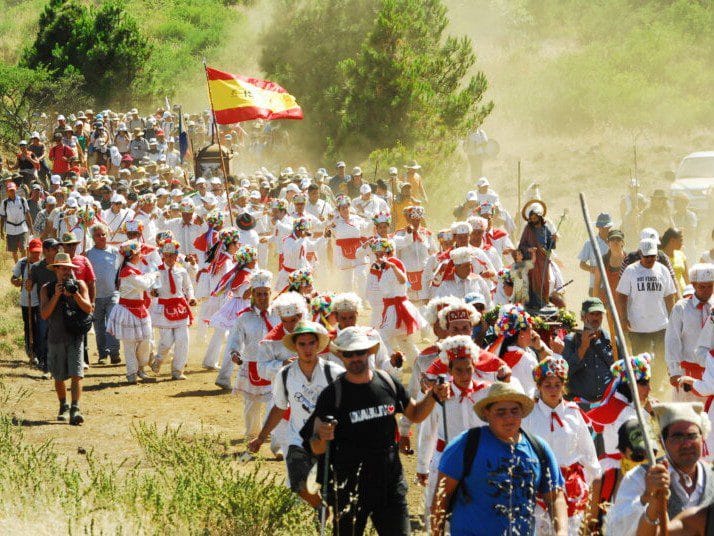
Emblematic festivities
Descent of the Virgen de los Reyes
One of the most important celebrations in El Hierro is the Bajada de la Virgen de los Reyes. This event takes place every four years and attracts thousands of pilgrims who come to pay homage to their patron saint. The festivity mixes religiosity, tradition and fun.
The events begin with the descent of the image from its sanctuary in La Dehesa to the town of Valverde, where a series of cultural and religious activities are held. Music, folkloric dances and local gastronomy are the protagonists during this celebration, which represents the devotion and community feeling of the herreños.
Local festivals and traditions
In addition to the Bajada de la Virgen, El Hierro has a variety of festivities that enrich its cultural heritage. Some of the most emblematic are:
- Fiesta de San Juan: Celebrated in June, it is an event that gathers the inhabitants around bonfires and music, in order to commemorate the summer solstice.
- Fiestas de la Ascensión: This religious festivity takes place in August, with processions and activities that reflect the local faith and traditions of the island.
- Fiestas de la Virgen de los Reyes: Within the same celebration of the Bajada, complementary activities such as craft fairs and tastings of local products are held.
These festivities highlight the island’s identity and rich cultural heritage, making the island a vibrant and lively place all year round.
Geography and Nature
The island's geography is the result of a volcanic origin and possesses a remarkable natural diversity. This uniqueness translates into a variety of landscapes ranging from vertical cliffs to gentle plains, being home to rich and varied ecosystems.
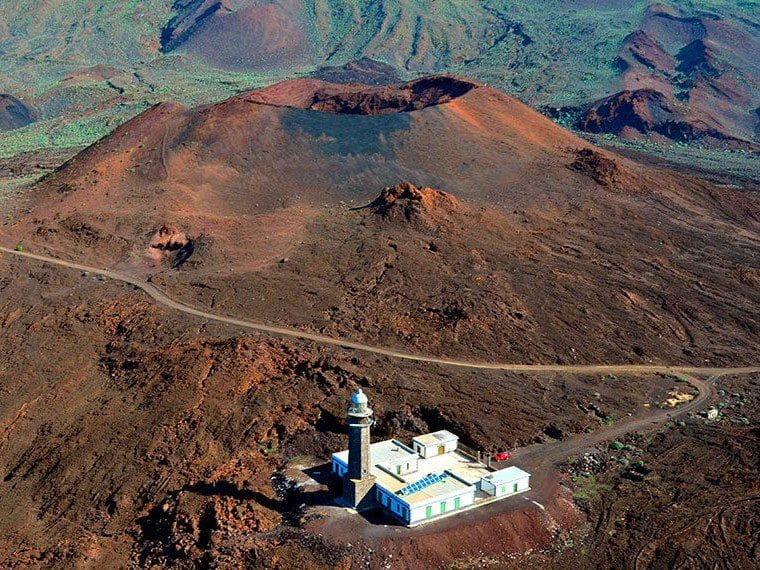
Volcanic origin and geological formation
El Hierro is an island of volcanic origin, formed approximately 1.1 million years ago. Volcanism and seismic activity have shaped its geography, leaving a series of impressive geological formations. Different strata of rock, ash and lava are present throughout the landscape, allowing geologists to study the evolution of the Canary Islands. Numerous volcanoes can be found in its territory, some of which are still visible, offering a window into the island’s geological past.
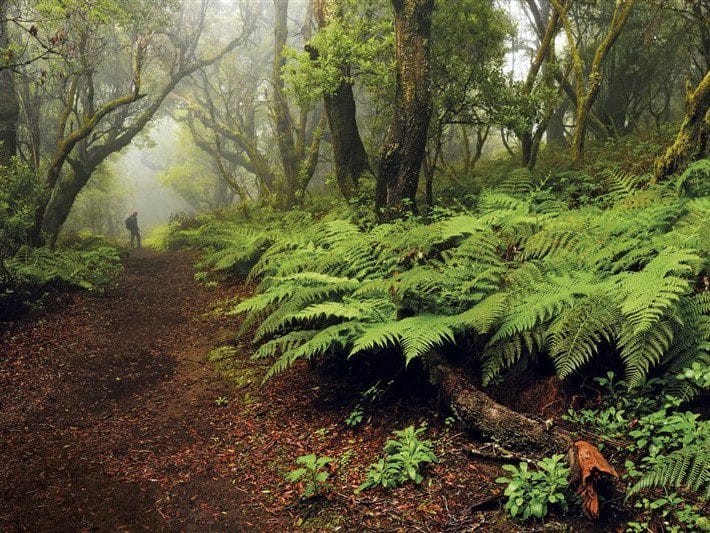
Diverse ecosystems
The climatic variety in El Hierro allows diverse ecosystems to develop, ranging from arid zones to areas covered with lush vegetation.
Arid zones
The drier areas of the island have a landscape dominated by hardy shrubs and xerophytic vegetation. These areas tend to have poor soil and low rainfall, but are home to species adapted to the harsh climatic conditions. The xerophyticity that characterizes these regions translates into a special beauty that attracts the most curious visitors.
Laurisilva forests
In contrast, the wetter areas are home to laurel forests, a dark, dense subtropical vegetation that thrives in humid climates. This ecosystem is especially valuable not only for its biodiversity, but also for its role in regulating the local climate. Laurisilva trees are the refuge of numerous species of fauna that feed on its abundant flora. These forests are an observable microclimate that adds significant ecological value to the island.
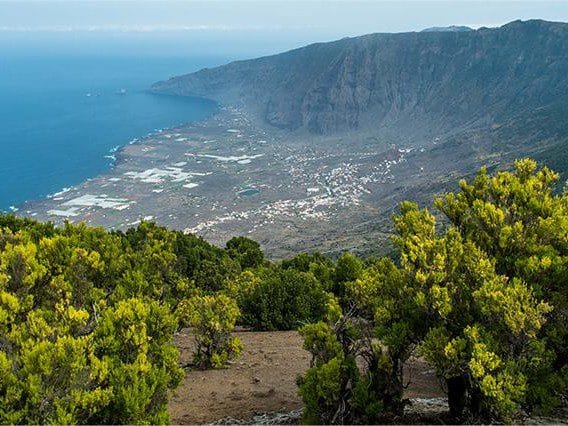
Malpaso Peak
Malpaso Peak, the highest elevation on El Hierro, rises 2,001 meters above sea level. This mountain not only offers spectacular views that encompass the island and the surrounding ocean, but is also an ideal place for hiking. Its rugged landscape AND the varied flora that surrounds it attract nature lovers and outdoor sports professionals. The ascent to the peak is a rewarding challenge, adorned by a breathtaking panorama that rewards any effort made.
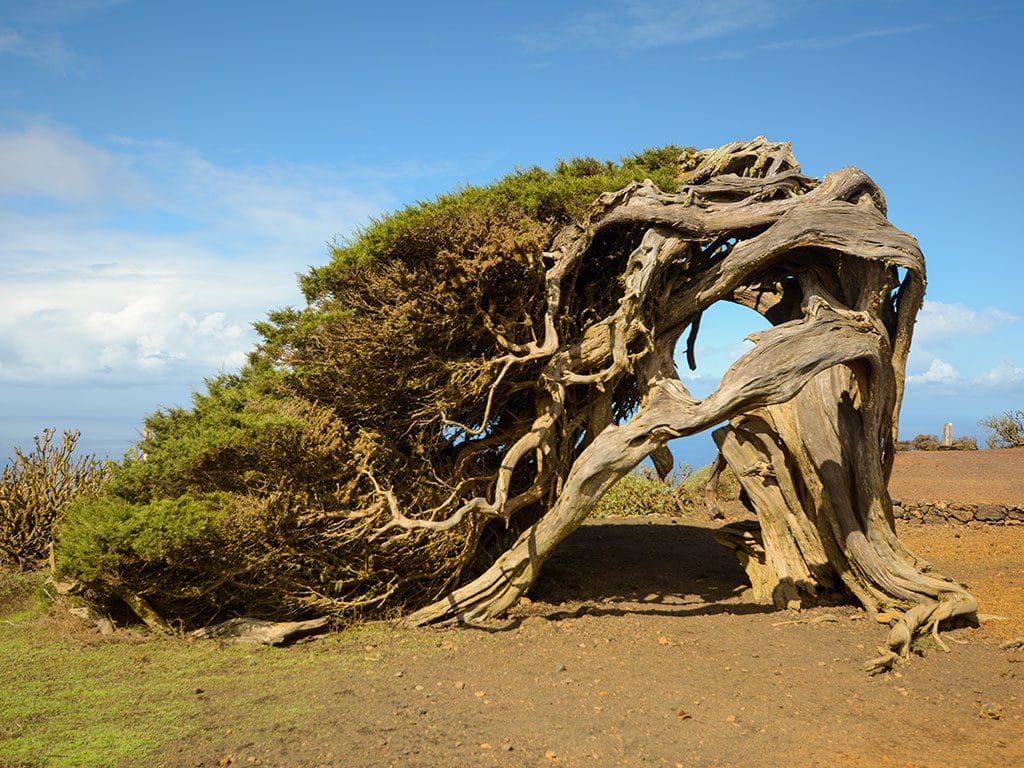
UNESCO Biosphere Reserve
El Hierro was designated as a Biosphere Reserve by UNESCO in 2000, recognizing its ecological diversity and the importance of its natural heritage. This designation implies a commitment to conservation and sustainable development, seeking to balance resource use and environmental protection. In the reserve, several emblematic species are protected and practices that promote respect and care for the environment are encouraged. The declaration also helps to raise the island’s visibility as an ecotourism destination.
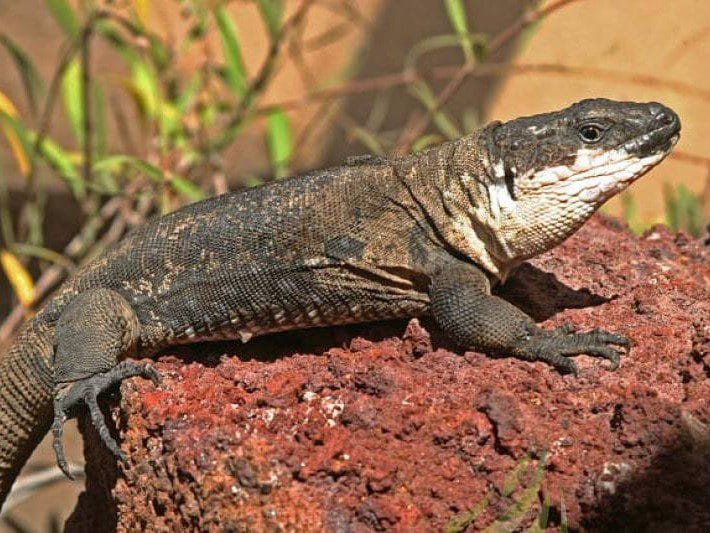
Endemic flora and fauna
The ecological richness of El Hierro is manifested in its endemic species, which are exclusive to the island. This phenomenon is due to its geographic isolation and the diversity of habitats available.
Giant lizard of El Hierro
Among the best known species is the giant lizard of El Hierro. This reptile, which can reach considerable size, is one of the most emblematic species of the island. Its population has been the object of conservation efforts, since its natural habitat has been reduced. It can often be sighted in rocky areas and rural areas, where it plays an important role in the local ecosystem.
Endemic birds
El Hierro is also home to several endemic birds, including the giant lizard and other unique species such as the El Hierro finch, a small bird that is prized for its melodious song. These birds contribute to the richness of the environment and are monitored to ensure their conservation. Birdwatchers find on the island an ideal refuge to appreciate these native species in their natural habitat.
4. Tourism in El Hierro
Tourism in El Hierro offers a unique experience for those seeking a natural and cultural refuge. Outdoor activities predominate, and the richness of its environment invites you to explore every corner of this small but fascinating island.
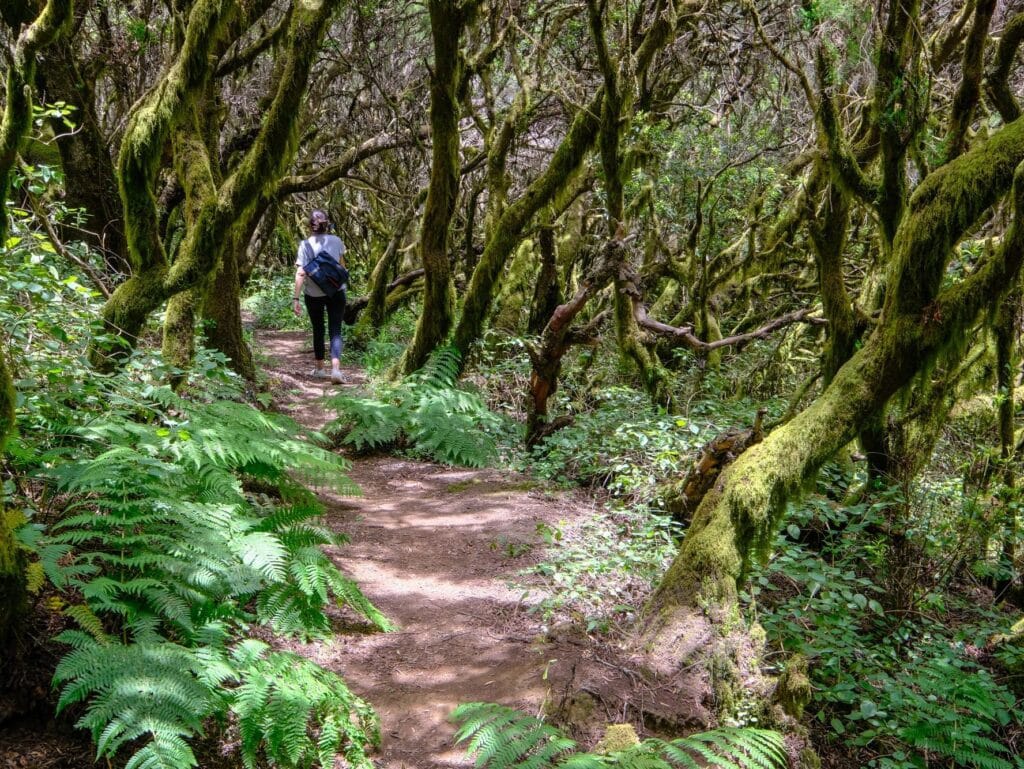
Hiking
Hiking is one of the main activities that attract visitors to El Hierro. The island has a network of routes that allow visitors to get to know its nature and spectacular landscapes.
Popular routes
Hiking trails in El Hierro are varied and range from gentle to challenging. Some of the most popular include:
- Trail from La Restinga to Punta de La Rasca, which offers views of the ocean and unique geological formations.
- Sabinar Route, where you can observe the famous juniper trees that grow in extreme environments.
- Camino de la Virgen, a historic route that connects different localities and offers a glimpse of the local culture.
Jinama Roads
The Jinama Trail is one of the most emblematic routes. It connects the town of Valverde with the Jinama district, allowing hikers to enjoy spectacular views of the valleys and the coast. This trail, with a route that offers a variety of landscapes, is perfect for those who wish to immerse themselves in the natural beauty of the island.
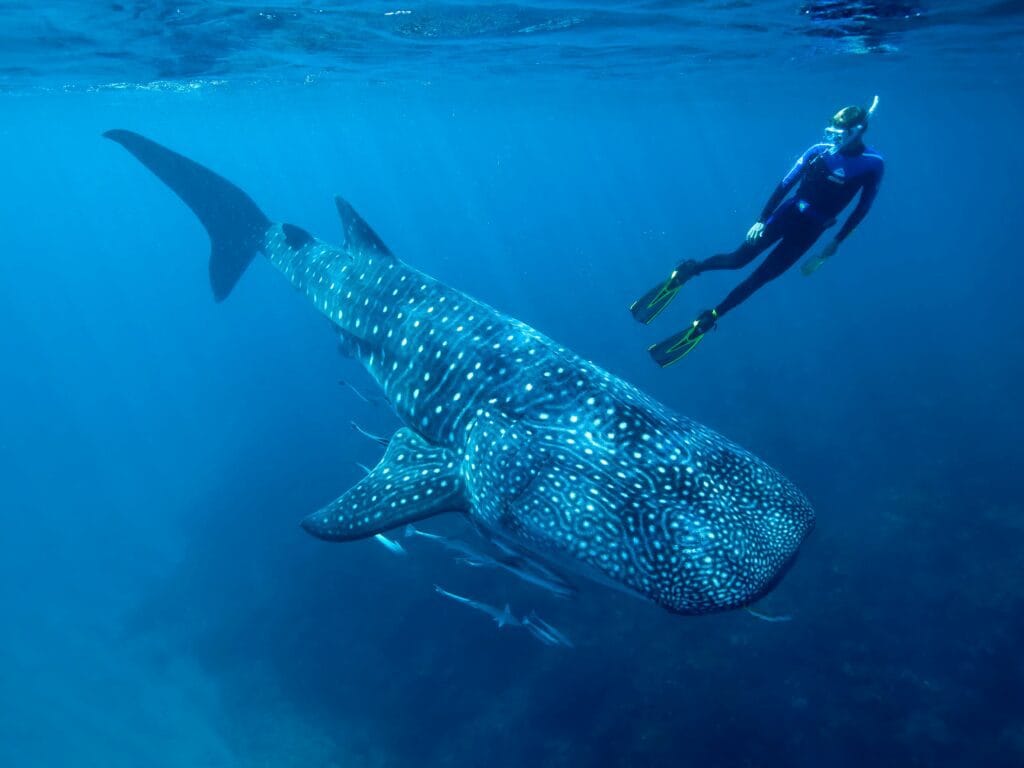
Diving
The coast of El Hierro becomes a paradise for diving lovers. The crystal clear waters and marine diversity make this activity an unforgettable experience.
Immersion points
There are more than 40 dive sites, each offering a different experience. Among them are:
- Cabo de El Cabron, famous for its rich marine life and rock formations.
- The Cathedral, an emblematic point where you can observe impressive natural structures underwater.
- La Restinga beach, ideal for divers of all levels.
Marine reserves
The marine reserves of El Hierro, such as La Restinga, are protective of the local biodiversity. These areas not only ensure a home for numerous species, but also provide a controlled environment for diving.
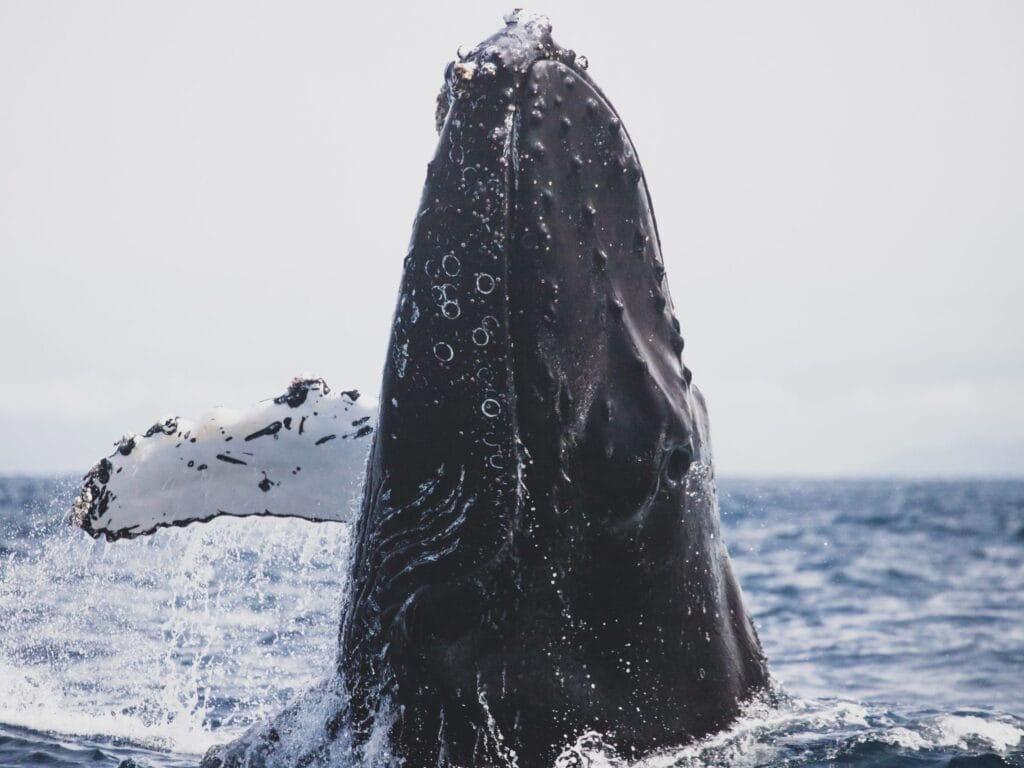
Whale and dolphin watching
The marine environment of El Hierro is equally attractive for those who wish to practice whale watching. The area is home to different species, including dolphins and whales. There are organized excursions that allow you to observe these magnificent animals in their natural habitat.
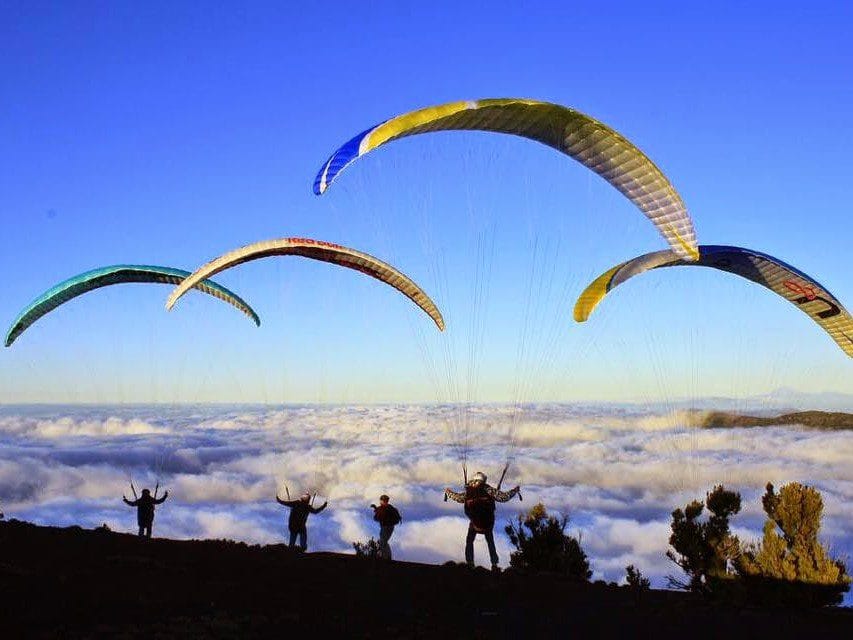
Paragliding
Paragliding has gained popularity in El Hierro, providing a unique experience to enjoy panoramic views. The wind conditions, thanks to the island’s geography, are favorable almost all year round and allow visitors to launch themselves into the void and land gently.
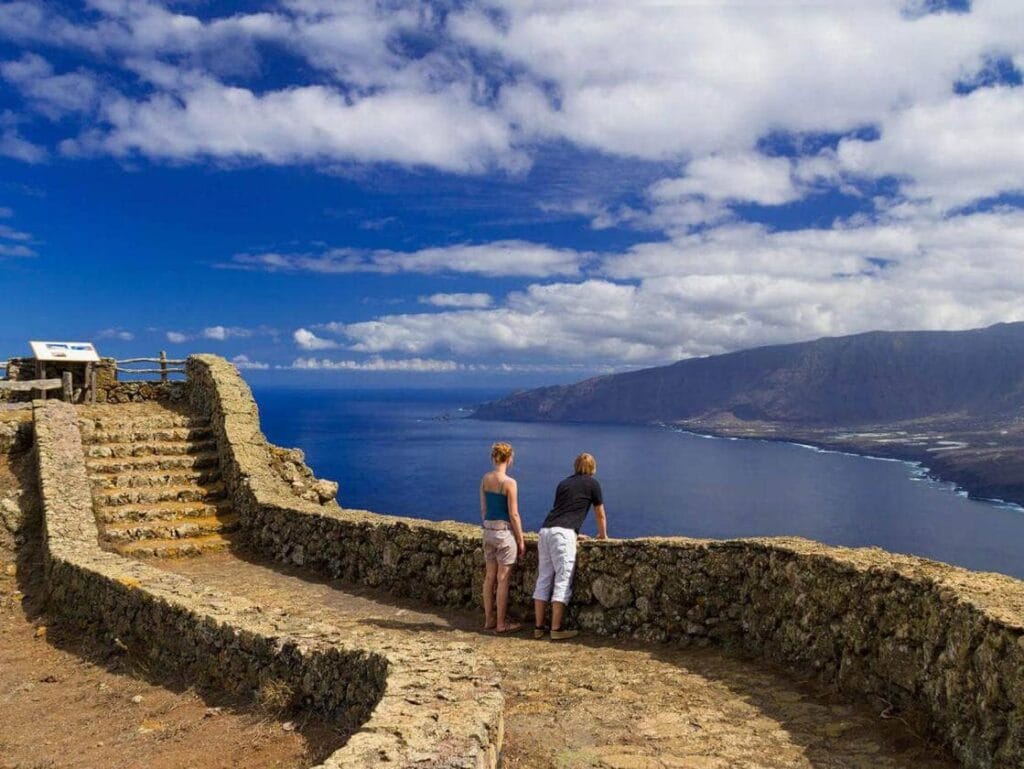
Viewpoints
The viewpoints of El Hierro are essential stops to contemplate the magnificence of the landscape of El Hierro. The observation points allow you to enjoy both the coast and the internal valleys.
La Peña viewpoint
The Mirador de La Peña, designed by the Canarian architect César Manrique, is one of the most iconic places. From here you can admire a breathtaking view of the Gulf of El Hierro, with the ocean in the background and the mountains surrounding the island. It is an ideal place to enjoy a break and take pictures that capture the essence of this corner of the Atlantic.
5. Protected Natural Spaces
Protected natural areas in El Hierro are essential for maintaining biodiversity and preserving the island's natural beauty. These areas are home to unique ecosystems that offer a safe haven for numerous species of flora and fauna.
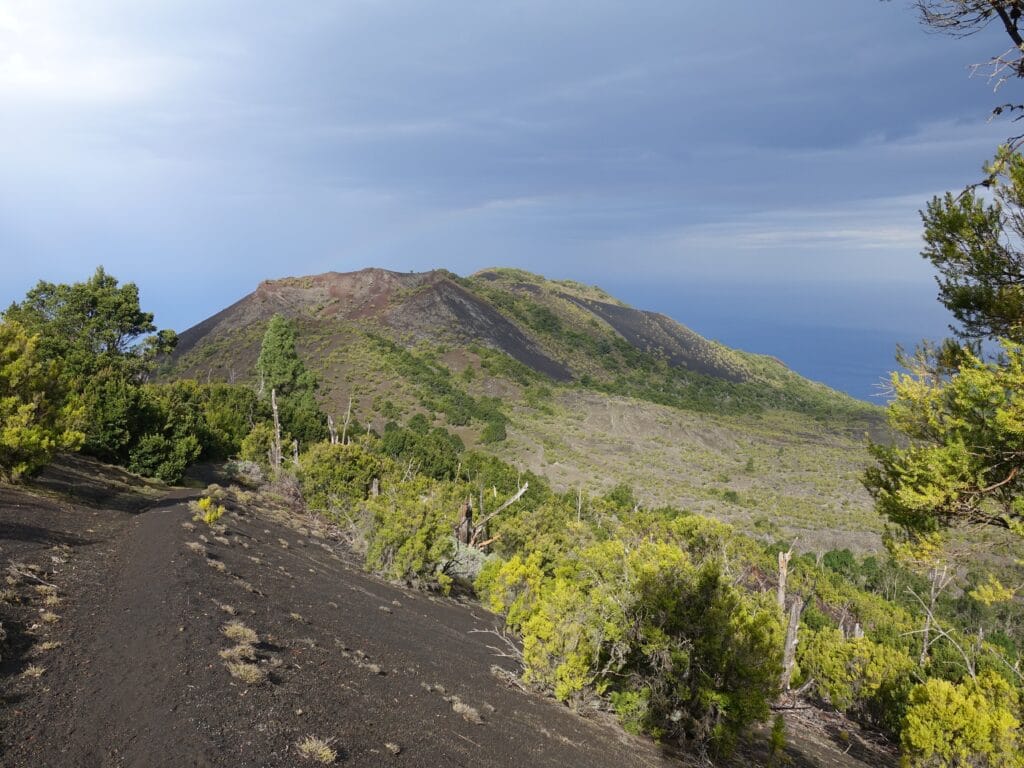
Volcanic landscapes
The geography of El Hierro is marked by its volcanic origin, which has given rise to impressive landscapes that are not only a visual spectacle, but also represent fragile ecosystems. The geological formations are witnesses of the volcanic activity that shaped the island millions of years ago.
- Tanganasoga Mountain is one of the best known, where volcanic remnants are evident and offer a captivating landscape with panoramic views.
- The environment of Malpaso is also remarkable, with its steep slopes and valleys that showcase the geological richness of the island. This area is ideal for hiking and exploration.
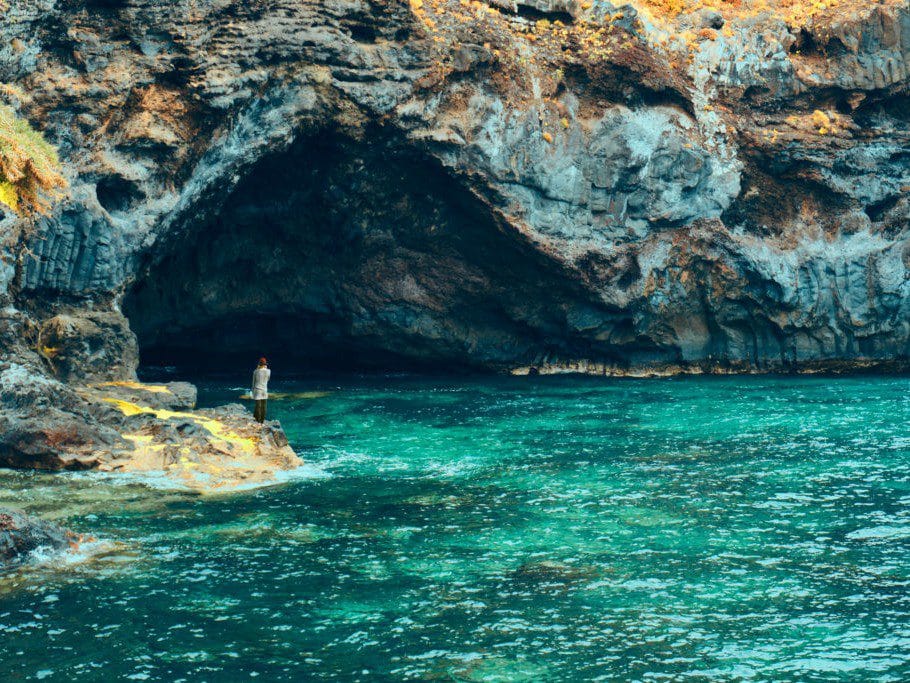
Marine areas
The waters surrounding El Hierro are equally important and have been designated as marine protected areas, helping to conserve the ocean’s rich biodiversity. These areas are characterized by their great clarity and abundance of marine life.
- Marine reserves are crucial habitats for a variety of species, including corals, fish and cetaceans. Responsible fishing is encouraged in these areas.
- The marine ecosystems allow the practice of aquatic sports, being one of the favorite destinations for scuba diving. The underwater richness attracts many nature lovers.
The protection of these areas ensures that both the natural heritage and the biological diversity of El Hierro are maintained for future generations. This preservation allows for ecological balance and encourages scientific research, making the island a place of interest for ecologists and scientists.
6. Events and Activities
On El Hierro, the vibrant culture and stunning natural environment are intertwined in a variety of events and activities that are highlighted throughout the year. Festivals and competitions reflect the essence of the island and offer unique experiences to locals and visitors alike.
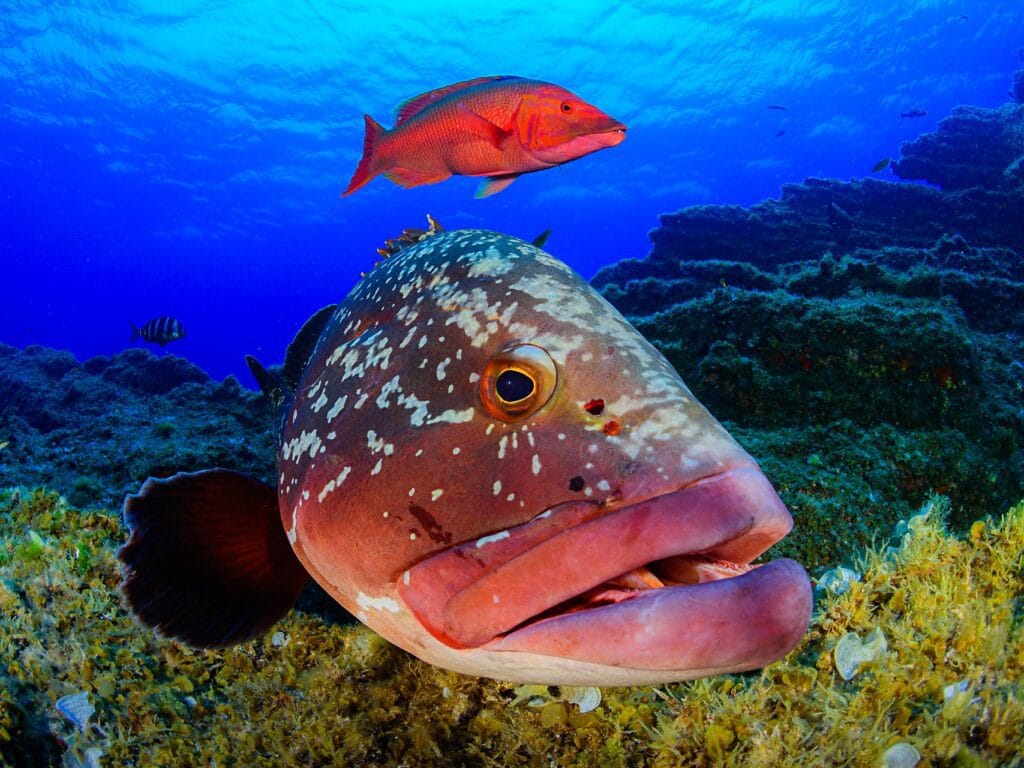
Open Fotosub International
The Open Fotosub International is an underwater photography championship held annually in El Hierro. This event brings together photographers from around the world who compete to capture the beauty of the island’s marine ecosystem. For several days, participants explore the best diving spots, documenting the rich marine life and diversity of its underwater landscapes.
The event not only promotes photography, but also highlights the importance of marine conservation. Photographers must follow strict environmental guidelines, ensuring that their activity does not affect the ecosystems they are documenting. The culmination of the event is the exhibition of the winning entries, showcasing the stunning images that reflect the beauty and fragility of the underwater life in the waters off the island.
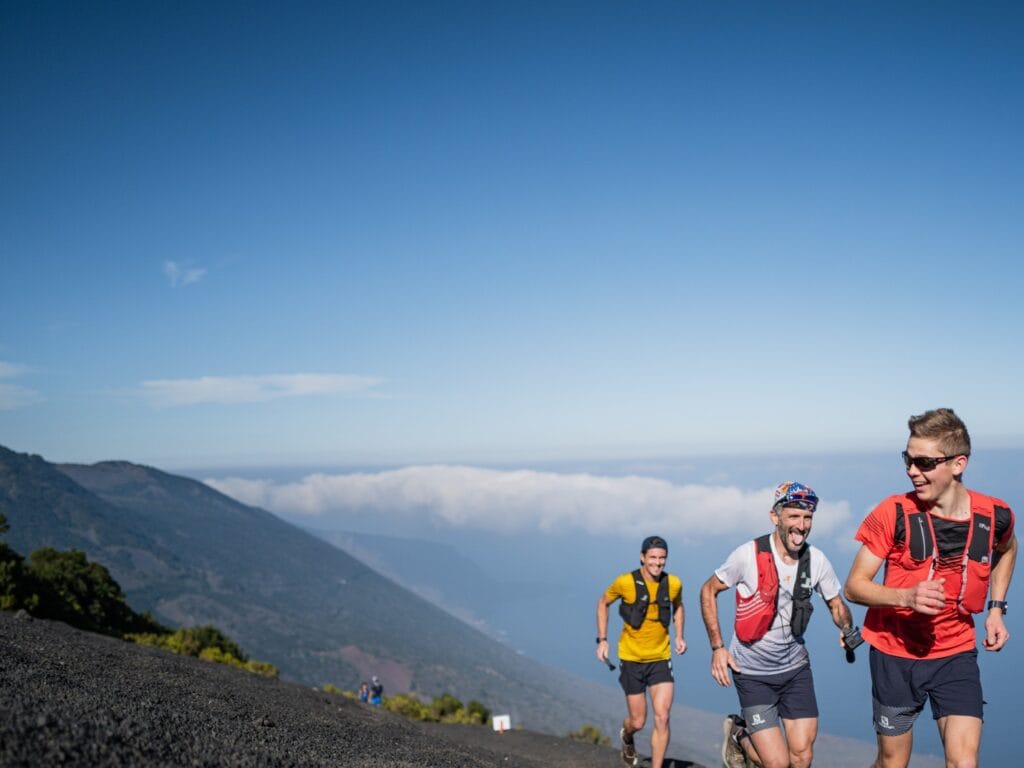
Sports festivals
El Hierro hosts a variety of sports festivals that attract both athletes and amateurs. These competitions encompass a variety of disciplines that allow you to enjoy the natural beauty of the island while creating an atmosphere of camaraderie and challenge.
El Hierro Trail
This event is held annually and consists of a series of mountain races that run through the most emblematic trails of the island. Participants can choose between different distances, allowing runners of various levels to enjoy the experience. The race offers breathtaking scenery, with views that include cliffs, laurel forests and beautiful volcanic formations.
Sailing Championships
The sport of sailing has a strong presence on El Hierro, thanks to the calm and favorable waters surrounding the island. Regattas and competitions are organized to encourage local participation and interaction with visitors. During these events, sailors can enjoy the optimal conditions for the practice of this sport, surrounded by an incomparable natural environment.
Paragliding Meetings
Paragliding has become a popular activity in El Hierro, with meetings that bring together pilots from different parts of the world. The island’s mountains and valleys offer ideal conditions for this extreme sport. Participants can enjoy spectacular ascents and descents that allow them to contemplate the panoramic views of the Herreño landscape and the surrounding ocean.
7. Gastronomy of El Hierro
El Hierro's gastronomy is a reflection of its natural and cultural environment. Fresh local products and culinary traditions combine to offer a unique gastronomic experience that highlights the flavors of the sea and the land.
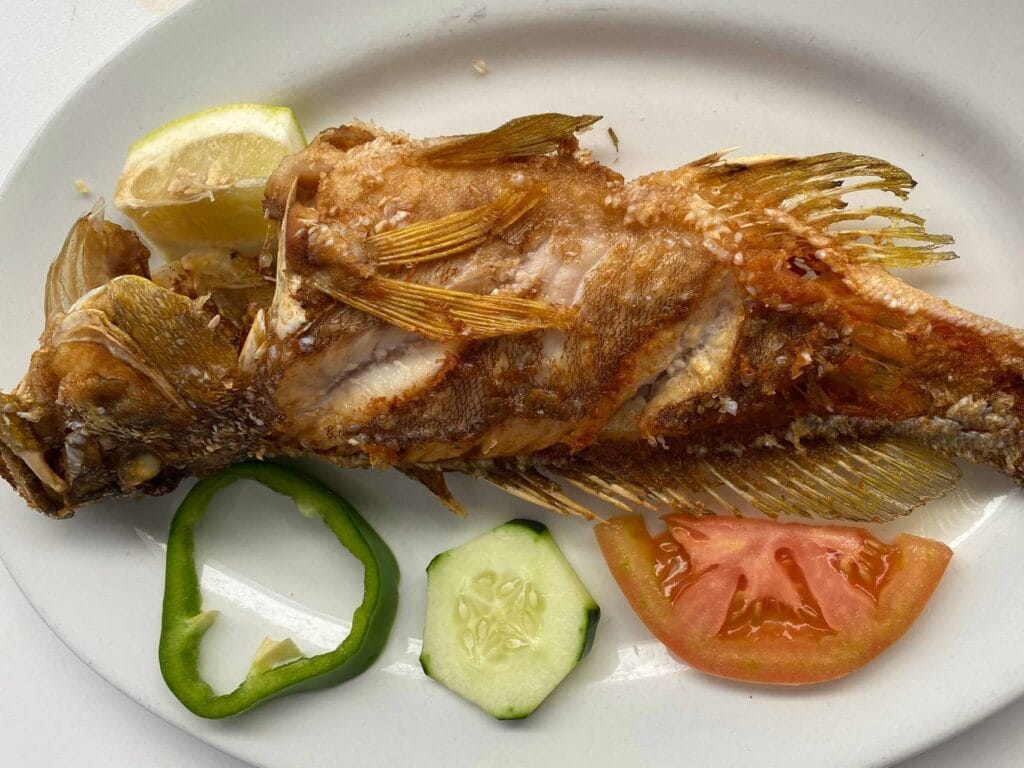
Typical dishes
Fresh fish
El Hierro has a rich fishing offer that results in a variety of dishes where fresh fish is the protagonist. The proximity of the Atlantic Ocean guarantees the quality and freshness of seafood. Among the most valued species are:
- The grouper, highly appreciated for its white and soft meat, is usually prepared grilled or in preparations such as sancocho, a traditional stew.
- Viejas, an outstanding fish in the local cuisine, are served fried or grilled, accompanied by potatoes and salad.
- Tuna is another attraction of the Herreño coast, whose cuts are used in various preparations, from salads to tatakis.
Wrinkled potatoes with mojo
An emblematic dish that cannot be missing from the Herreña table is papas arrugadas (wrinkled potatoes). This simple recipe is prepared with small potatoes that are cooked in their skins in very salty water, which gives them a unique flavor.
They are traditionally accompanied with mojo picón, a sauce made from garlic, peppers, olive oil and spices. There is also mojo verde, which includes fresh herbs and coriander, adding a different touch to this characteristic starter.
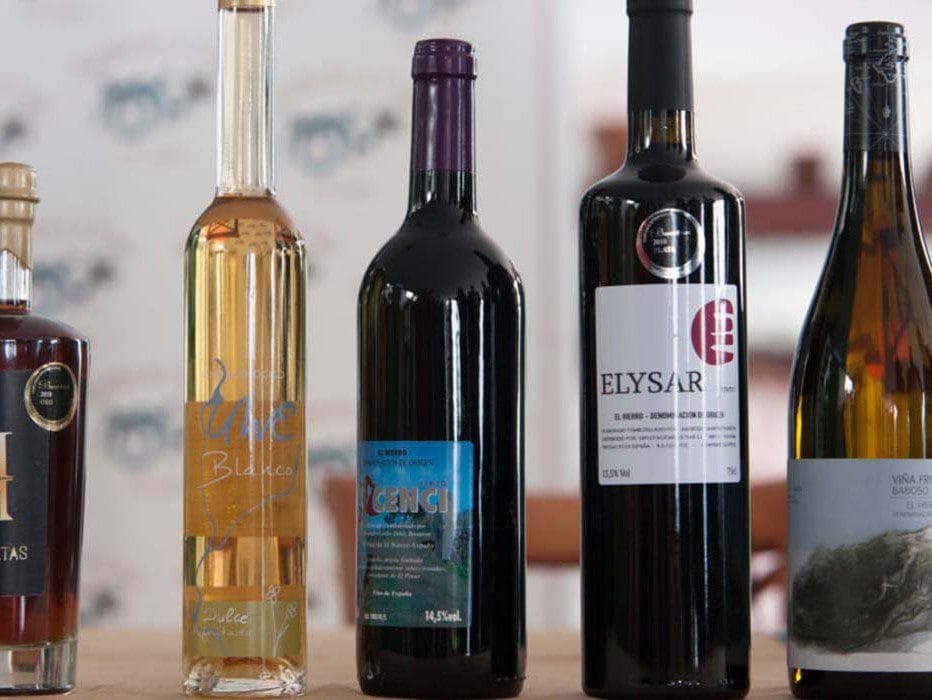
Local products
Artisanal cheeses
The cheese tradition in El Hierro is very rich and has a variety that has gained recognition both nationally and internationally. The cheeses, elaborated in an artisanal way, stand out for their characteristic flavor and texture. Among the most popular varieties are:
- Fresh cheese, with a soft texture and delicate flavor, perfect to accompany mojos or simply as an appetizer.
- Cured cheese, which has a more intense flavor and is usually enjoyed in small boards with a good local wine.
- Goat cheese, which offers a range of flavors depending on the curing time and feeding of the cattle.
Wines with designation of origin
El Hierro is also known for its winemaking tradition. With a production that has recovered and diversified in recent years, El Hierro wine is made mainly from native varieties.
The red, white and rosé wines have a unique character, influenced by the volcanic soil and the particular climate of the island. Among the most outstanding are:
- Red wine made from the Listán Negro grape, which offers a robust and fruity flavor.
- White wine of the Verijadiego variety, which is refreshing and with citrus notes, ideal for pairing with fish.
8. Economy and Sustainable Development
The island's economy is characterized by its focus on sustainability and respect for the environment. This commitment is reflected in various economic activities that have been able to adapt to the particularities of the island, promoting a balanced and sustainable development.
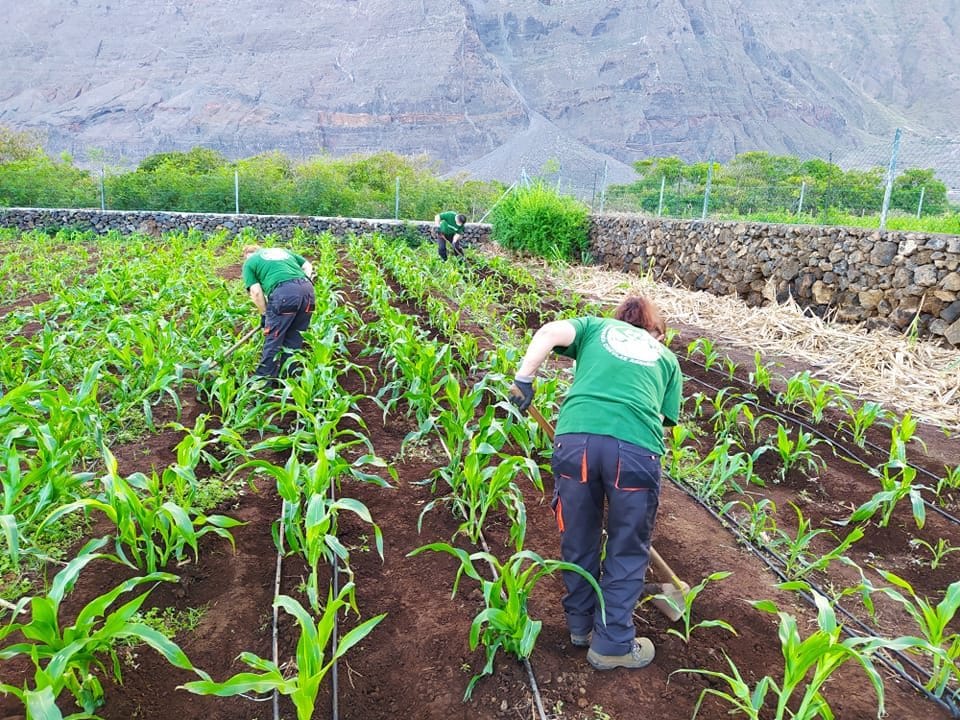
Agriculture and livestock
Agriculture in El Hierro is mainly based on self-sufficiency crops, favoring fresh and local products. The climatic and geographical conditions of the island allow the cultivation of a series of products that are representative of the gastronomy of El Hierro.
- Fruits: Bananas and potatoes are some of the most prominent crops.
- Vegetables: Vegetable production is important, especially in the most fertile areas.
- Wine: Viticulture has had a resurgence, offering wines with denomination of origin.
Livestock also plays a crucial role in El Hierro’s economy. Cattle are an essential source of dairy products and meat. Native breeds have been preserved, contributing to genetic diversity and the maintenance of rural traditions.
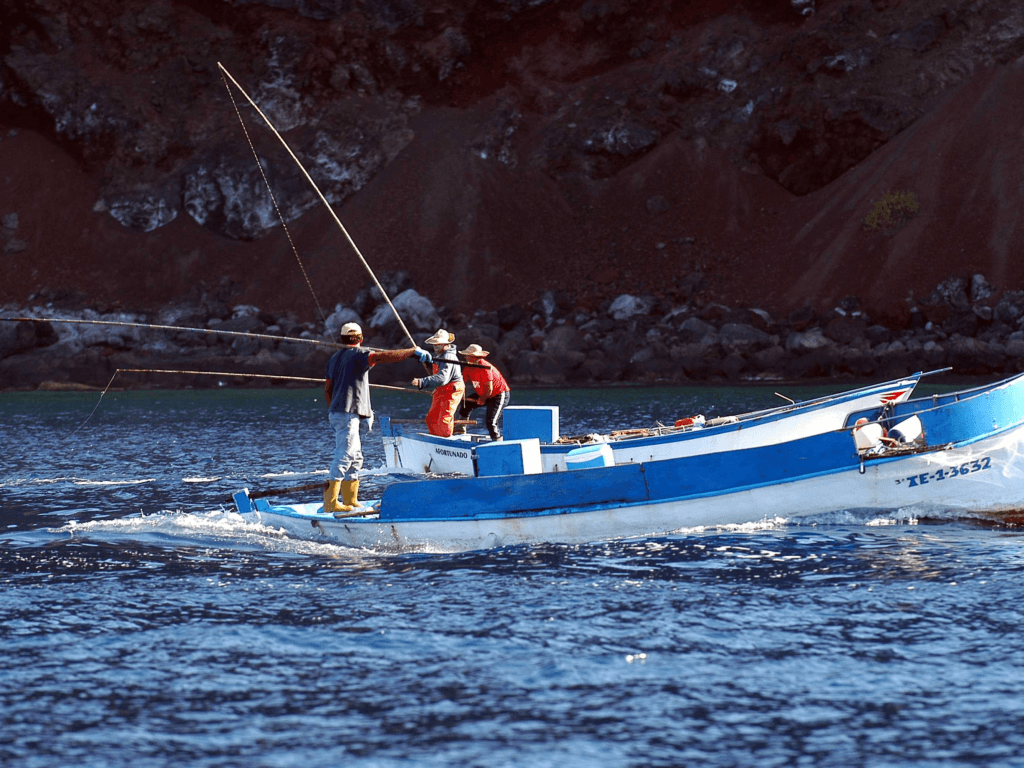
Fishing
Fishing in El Hierro is both an economic activity and a cultural practice. The island’s fishermen are dedicated to catching various marine species that enrich the local gastronomic offer. This sector has sought to balance the use of resources with the conservation of the marine environment.
- Fish: The most common species is fresh fish, highly appreciated in Canarian cuisine.
- Seafood: Special value is given to seafood, which is part of the traditional recipes.
Respect for sustainability standards is fundamental. Fishing activities are regulated to ensure the conservation of species and the balance of marine ecosystems.
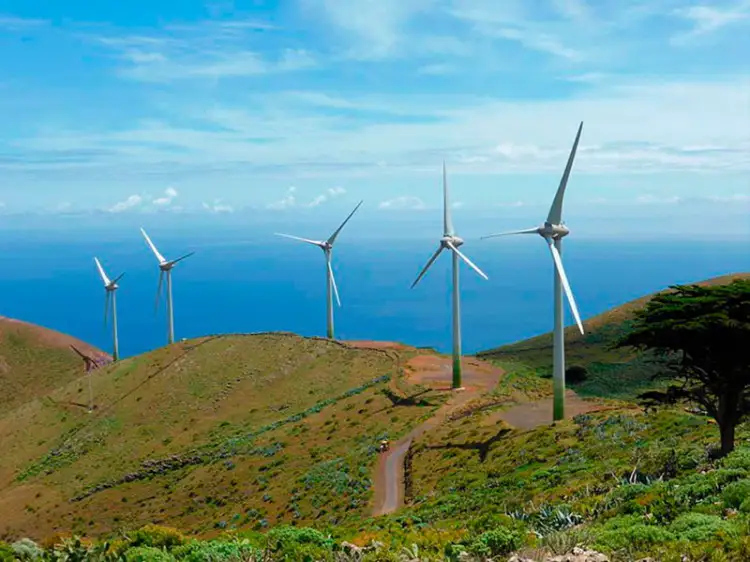
Renewable energies
El Hierro’s sustainable development is manifested in its commitment to renewable energies. The island has become a world reference in the production of ecological energy, becoming almost completely self-sufficient in this aspect.
Wind energy
Wind energy is one of the pillars of El Hierro’s energy system. Wind turbines have been installed to harness the power of the wind to produce electricity. This energy source is key to reducing dependence on fossil fuels.
The wind energy project has allowed most of the island’s electricity consumption to be supplied by this renewable source, highlighting the island’s commitment to the environment.
Hydroelectric
Hydroelectric power complements wind power, forming a hybrid system that allows for the effective storage and distribution of the energy generated. Through a system of pumps, surplus wind energy is used to pump water into a reservoir, which is then released to generate electricity as needed.
This model not only ensures energy supply, but has also become an example of efficiency and sustainability to follow, consolidating El Hierro as a model in energy resource management.
9. Practical Information
To fully enjoy what the island has to offer, it is essential to take into account certain practical aspects. Below are details on the climate and amenities available to visitors.
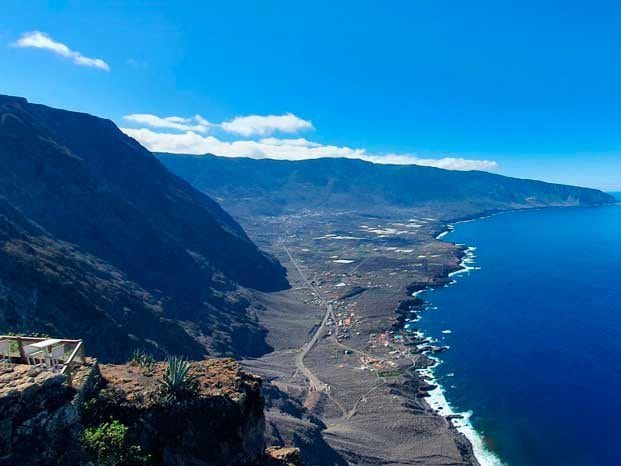
Weather and best time to visit
The climate of El Hierro is temperate, characterized by moderate temperatures and the influence of the Atlantic Ocean. Temperatures range between 15 and 25 degrees Celsius throughout the year, making it an attractive destination in all seasons.
The best time to visit the island is usually during the spring (March to June) and autumn (September to November) months, when temperatures are pleasant and there are fewer tourists. These periods offer ideal weather for outdoor activities such as hiking and scuba diving.
Summer can be hot, especially in drier areas, while winter, although mild, can be cooler and prone to some rain. Therefore, it is advisable to check the weather forecast before planning your trip, especially if you wish to engage in outdoor activities.
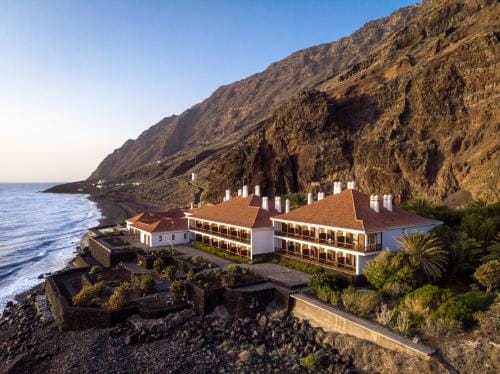
Services and amenities available
- Lodging: A variety of options can be found, ranging from hotels, apartments and rural houses to campgrounds and areas equipped for motorhomes. This variety allows each traveler to choose the option that best suits their needs and budget.
- Restaurants: The island offers a wide range of restaurants and bars serving local cuisine. Typical dishes include fresh fish, wrinkled potatoes and artisanal cheeses. Many restaurants offer menus that highlight local and seasonal products.
- Transportation: The island has a well-maintained road network that facilitates travel between the different towns and attractions. In addition, the airport ensures good connections to other islands and the mainland. Cab services are available, as well as the option of renting vehicles, which gives greater flexibility to explore every corner of El Hierro.
- Health and emergency: There are health centers on the island that offer basic care. Parapharmacies and supermarkets are also available in the main towns for health products and services.
- Connectivity: Most areas of the island have Wi-Fi access, especially in hotels and restaurants. This allows visitors to stay connected and share their experiences during their stay.
